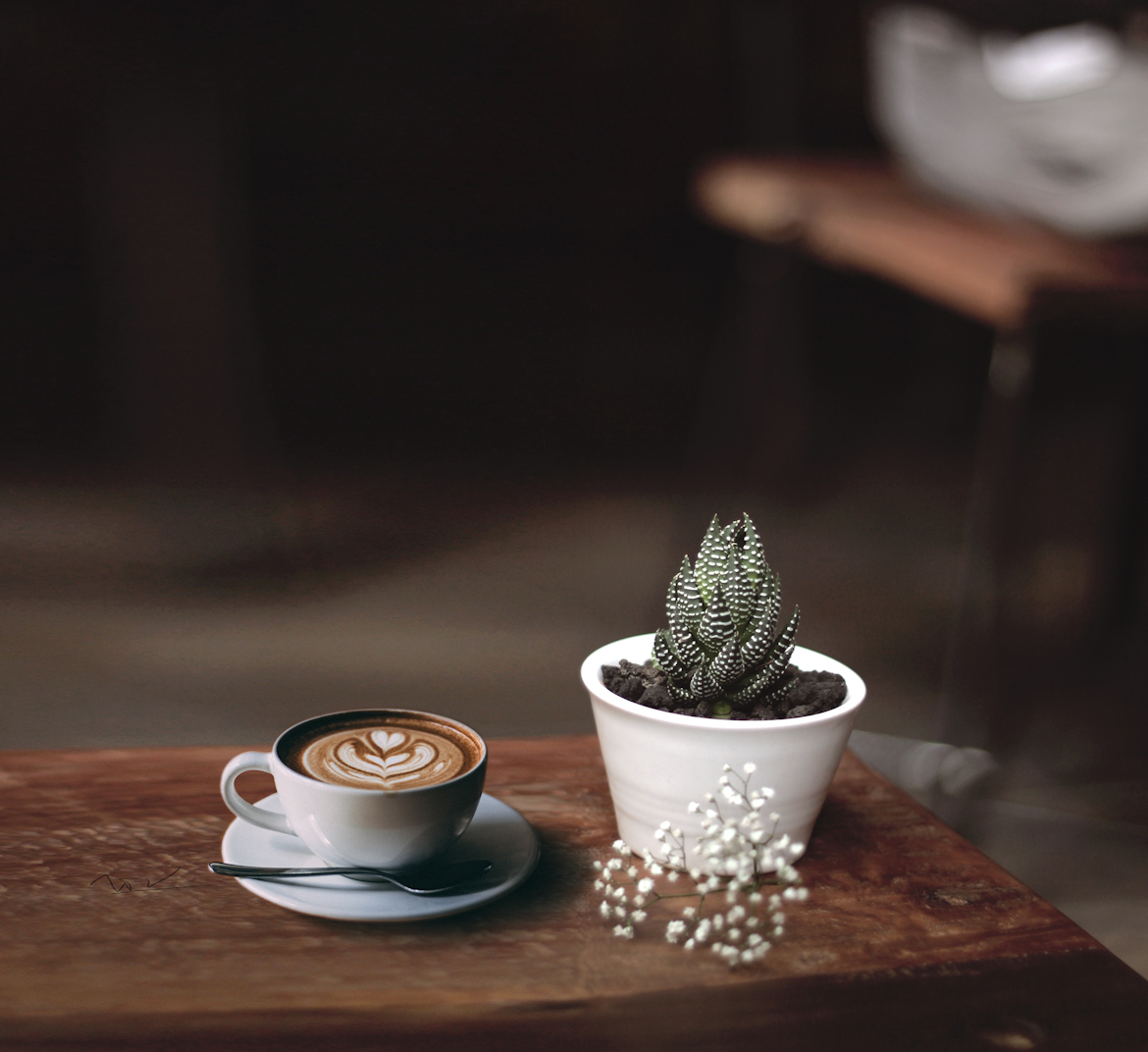As a self-proclaimed coffee connoisseur and frequent Starbucks patron, I‘ve always been curious about the espresso that fuels my daily adventures. From the rich aroma that greets me at the door to the satisfying kick of caffeine, Starbucks espresso is an integral part of my routine. But what exactly goes into crafting the perfect shot?
In this comprehensive guide, we‘ll explore everything you need to know about Starbucks espresso in 2024. We‘ll dive deep into the origins of the beans, the unique roasting process, and the art of pulling the perfect shot. Whether you‘re a longtime fan or a curious newcomer, get ready to become an expert on all things Starbucks espresso.
The Heart of Starbucks: Signature Espresso Roast
At the core of every Starbucks espresso-based beverage lies their iconic Signature Espresso Roast. This dark, robust blend has been a staple since the company‘s early days in Seattle. Developed in 1975 by Starbucks cofounder Dave Olsen, the recipe has remained unchanged for nearly half a century.
So, what makes this blend so special? It all starts with the beans. Starbucks sources high-quality arabica coffee from Latin America, primarily Colombia and Brazil, for their Signature Espresso Roast. These beans are carefully selected for their rich flavor profile and ability to withstand the intense heat of the roasting process.
Once the beans arrive at Starbucks‘ roasting facilities, the magic begins. The coffee undergoes a unique roasting process that brings out the bold, full-bodied notes of caramel and spice. Starbucks master roasters use state-of-the-art equipment to ensure consistency and quality in every batch.
According to Starbucks, their Signature Espresso Roast clocks in at an intensity level of 11 out of 13, making it one of their darkest offerings. This robust flavor stands up beautifully to milk and other additives, making it the perfect foundation for lattes, cappuccinos, and more.
When it comes to caffeine content, a single shot of Starbucks Signature Espresso Roast contains approximately 75 mg of caffeine. This is slightly higher than the average 64 mg found in a typical shot of espresso, according to the USDA.
The Rise of Blonde Espresso
While the Signature Espresso Roast has been a beloved mainstay, Starbucks shook things up in 2018 with the introduction of their Blonde Espresso. This lighter roast option offers a distinctly different flavor profile that has quickly gained a devoted following.
Blonde Espresso is crafted from a blend of Latin American and East African beans, carefully roasted to preserve their bright, vibrant flavors. The result is a smooth, subtly sweet espresso with notes of citrus and a creamy mouthfeel.
Interestingly, Blonde Espresso actually packs more of a caffeine punch compared to its darker counterpart. A shot of Blonde Espresso contains approximately 85 mg of caffeine, nearly 10% more than the Signature Espresso Roast.
This higher caffeine content is due to the lighter roasting process. As coffee beans are roasted, they lose some of their caffeine content. Thus, a light roast like Blonde Espresso retains more of its natural caffeine compared to a darker roast.
Blonde Espresso has been a hit among those who prefer a milder, brighter espresso flavor. It has also gained popularity among non-dairy milk drinkers, as its sweet, smooth profile pairs exceptionally well with alternative milks like almond and oat.
You‘ll find Blonde Espresso featured in several Starbucks menu items, including the Iced Brown Sugar Oatmilk Shaken Espresso and the Blonde Vanilla Latte. Of course, you can always request Blonde Espresso in your favorite handcrafted beverage as well.
Decaf Espresso: Flavor Without the Buzz
For those looking to enjoy the rich flavor of espresso without the caffeine kick, Starbucks offers a decaffeinated option. Using a special Swiss water process, 99.9% of the caffeine is removed from the beans while preserving the essence of the Signature Espresso Roast flavor.
A shot of Starbucks decaf espresso contains just 3-6 mg of caffeine, making it a great choice for those sensitive to caffeine or looking to enjoy an espresso-based drink later in the day. Keep in mind that while the caffeine content is minimal, it‘s not completely caffeine-free.
The Art of the Perfect Shot
Crafting the perfect shot of espresso is both a science and an art. At Starbucks, baristas undergo extensive training to ensure they can consistently pull excellent shots with the right balance of flavor, body, and crema.
Starbucks uses state-of-the-art espresso machines, typically from brands like Mastrena and La Marzocco, which are calibrated to precise specifications. The grind size, water temperature, and pressure are all carefully controlled to extract the optimal flavor from the beans.
A standard shot of espresso at Starbucks is approximately 0.75 oz (22 ml) and takes between 18-23 seconds to pull. The resulting shot should have a rich, golden crema on top, indicating a well-balanced extraction.
When crafting espresso-based beverages, Starbucks baristas follow specific recipes to ensure consistency. A tall latte, for example, contains one shot of espresso, while a grande features two shots. However, customers can always request an extra shot or two for an added boost.
Espresso Consumption Trends and Statistics
Espresso has been a beloved beverage for over a century, with roots tracing back to Italy in the late 1800s. Today, it remains a popular choice among coffee drinkers worldwide.
According to the National Coffee Association‘s 2022 National Coffee Data Trends report, 27% of American coffee drinkers choose espresso-based beverages. This marks a significant increase from just 18% in 2012.
Starbucks, as the largest coffeehouse chain in the world, plays a significant role in shaping espresso consumption trends. With over 34,000 stores worldwide as of 2022, Starbucks serves millions of espresso-based drinks each day.
In their 2022 fiscal year, Starbucks reported a record $32.3 billion in net revenue, a testament to the ongoing demand for their products. While the company doesn‘t disclose specific sales data for espresso beverages, it‘s clear that they make up a substantial portion of their business.
Customizing Your Starbucks Espresso Experience
One of the best things about Starbucks is the ability to personalize your drink to suit your taste preferences. When it comes to espresso-based beverages, there are countless ways to make them your own.
First, consider the type of espresso you‘d like as your base. The Signature Espresso Roast offers a bold, robust flavor, while the Blonde Espresso provides a smoother, brighter taste. If you‘re looking to skip the caffeine, opt for a decaf shot.
Next, think about the number of shots you‘d like. A standard tall latte or cappuccino comes with one shot, but you can always ask for an extra shot (or two) for a stronger coffee flavor and added caffeine.
Milk options are another way to customize your drink. Starbucks offers a variety of dairy and non-dairy alternatives, each lending a unique flavor and texture to your beverage. Whole milk creates a rich, creamy latte, while almond milk offers a slightly nutty, lighter option. Experiment with different milks to find your perfect pairing.
Finally, don‘t forget about flavorings and toppings. Starbucks offers a range of syrups, from classic vanilla to seasonal favorites like pumpkin spice. A pump or two of syrup can add a touch of sweetness and flavor to your espresso drink. Toppings like whipped cream, cinnamon, or cocoa powder can also elevate your beverage.
The Future of Starbucks Espresso
As consumer preferences continue to evolve, Starbucks remains committed to innovating and adapting their espresso offerings. In recent years, we‘ve seen the introduction of new espresso-based drinks like the Iced Brown Sugar Oatmilk Shaken Espresso and the Blonde Vanilla Latte.
Looking ahead, we can expect Starbucks to continue pushing the boundaries of what‘s possible with espresso. They may explore new roast profiles, introduce unique flavor combinations, or even experiment with different brewing methods.
One area of potential growth is in the realm of plant-based beverages. As more consumers seek out dairy-free options, Starbucks has the opportunity to develop new espresso drinks that cater to this demand. They‘ve already made strides in this direction with the launch of oat milk nationwide in 2021.
Sustainability is another key focus for Starbucks moving forward. The company has committed to reducing waste and increasing the use of reusable cups. As part of this effort, they may explore new packaging options for their espresso beans and pods, such as compostable or recyclable materials.
Ultimately, the future of Starbucks espresso looks bright. With a strong foundation of quality beans, skilled baristas, and a commitment to innovation, Starbucks is well-positioned to continue shaping the espresso landscape for years to come.
Final Thoughts
From the first sip of a perfectly pulled shot to the satisfying finish of a handcrafted latte, Starbucks espresso is an experience unlike any other. As we‘ve explored in this guide, the secret to their success lies in a combination of high-quality beans, masterful roasting techniques, skilled baristas, and a commitment to innovation.
Whether you prefer the bold intensity of the Signature Espresso Roast, the smooth sweetness of Blonde Espresso, or the flavor without the buzz of decaf, Starbucks has an option to suit your taste. And with endless possibilities for customization, you can craft your perfect espresso beverage every time.
As a coffee lover and frequent Starbucks customer, I‘ve developed a deep appreciation for the art and science behind their espresso. From the rich aroma that greets me at the door to the skillful latte art that tops off my drink, every aspect of the experience is carefully curated.
So the next time you find yourself savoring a Starbucks espresso, take a moment to reflect on the journey those little beans have taken to reach your cup. From the fertile soils of Latin America to the skilled hands of your barista, each step plays a crucial role in creating the perfect sip.
And as Starbucks continues to innovate and push the boundaries of what‘s possible with espresso, I can‘t wait to see what the future holds. One thing is for sure – as long as there are coffee lovers like you and me, the art of espresso will continue to thrive at Starbucks.






